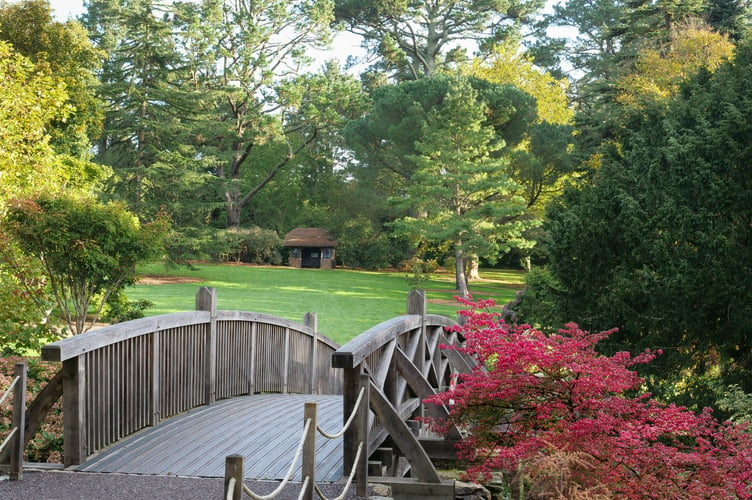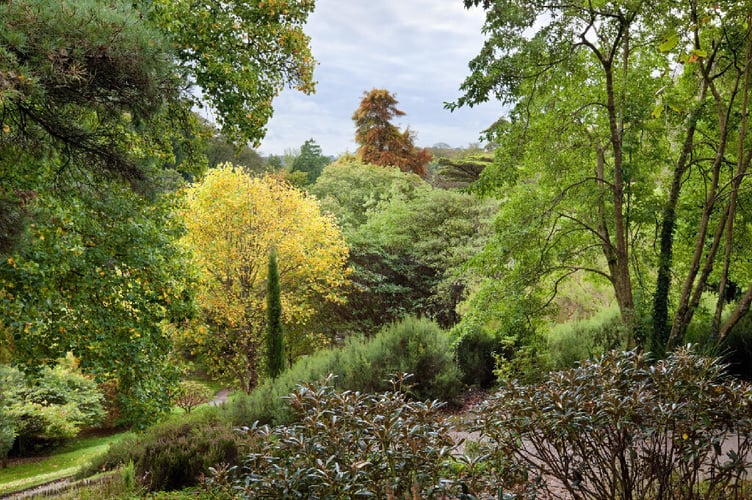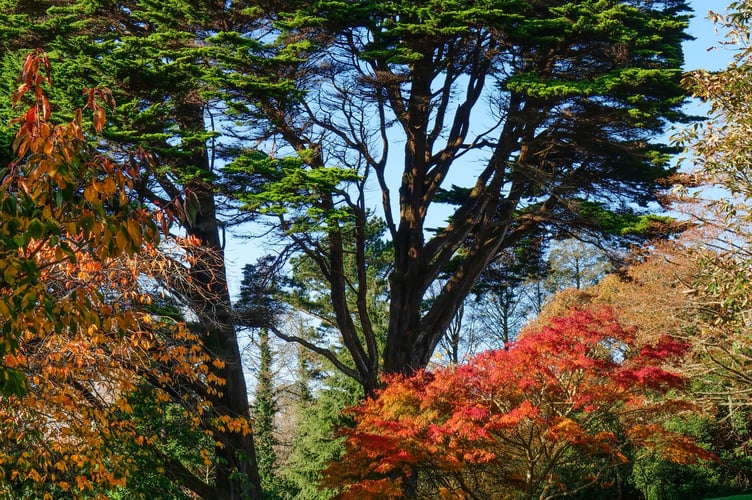NATIONAL Trust rangers and gardeners are preparing for a "mixed bag" of autumnal displays due to the cool and wet conditions preceding the yearly spectacle.
Hopes remain high for a dazzling colour display as trees have been able to hang on to their leaves for longer following the wet spring and a cooler than average summer.

However, tree crowns remaining at ‘full sail’ also increases the threat of damage caused by autumn storms, and the year’s weather conditions are also proving troubling for traditional autumn vegetable harvests.
Now, after an unsettled start to the season, the conservation charity is watching the weather closely to see how autumn colour might unfold and which seasonal delights visitors can look forward to.

Pamela Smith, the senior national consultant for gardens and parklands at the National Trust said: “As the predictability of weather patterns continues to alter due to a changing climate, the timings of a traditional autumn with its colourful canopy displays become less certain.
“We’ve seen a real mixed bag of conditions so far this year – particularly the soggy start, but if we see a gradual drop in temperature along with more settled weather, we could expect to see a drawn-out display.
“However, if we get sharp, hard, frosts or see further wet weather with storms, heavy rain and wind roll across the UK, that may cut any extended show short.”
Triggered by falling temperatures and changes in day length, deciduous trees and shrubs start to shed their leaves in autumn ready for the winter ahead. The variety of colour they turn before dropping is revealed by the disappearance of chlorophyll, the green pigment in leaves, and environmental factors including sun, temperature and moisture levels. Sunny days and cool nights make for the most impactful and colourful displays.
.jpeg?width=752&height=500&crop=752:500)
One of the consequences of autumn taking longer to develop and trees holding onto their leaves longer is the additional threat of damage from storms.

John Lanyon, head gardener at Glendurgan, Trelissick and Trerice, added: "It certainly feels like we are in for a wet, cold autumn, so it's more important than ever to go out and enjoy the last sunny days as the first signs of the changing emerge.
“Already, the leaves are starting to colour and soon we will be able to enjoy the stunning russet brown of our oaks, which are likely to hang on throughout the season.
"Thankfully, the wet weather has also meant we have seen signs of recovery from the effects of the drought of recent years, and many trees have been growing away, although we can see them closing down sections of branches and they are yellowing in patches which is a response to the stress they experienced. It has been good to see the gardens thriving in the cooler, damper weather."

Luke Barley, the National Trust’s senior national consultant for trees and woodland said: “In our management of both woods and ancient trees, we are worried about the impact of experiencing more storms when the trees are in leaf and catch the wind more, potentially causing more damage than these important habitats and trees can sustain.
“The past year has seen the most named storms since the naming system began in 2015 [3], and the impact of this increase in severe weather events is unavoidable for National Trust foresters and woodland managers. The constant alternation between extreme waterlogging and drought in the soil stresses trees, and we see the signs of this effect on their rooting environment everywhere in reduced health in their crowns.
“But it’s not all bad. The winds themselves have a variable affect: on the one hand, damaged trees can cause inconvenient disruption where they fall on roads and paths, or where swathes of plantation are blown over – but on the other hand, storm damage in our native woods is a natural process and can create some of the chaotic, thrilling dynamism that much woodland wildlife needs to survive.
“We also look after more ancient trees than any other landowner, and while storms can affect them, they’re often better able to resist them than taller, younger specimens – a reminder of their resilience but also of our responsibility for them in their great age.”

Mike Beeston, National Trust gardens and parks lead for the South West said: “‘Predicting what kind of autumn colour we will get as it depends on a range of factors, from temperature, sunlight, the degree of storm activity and how much the trees are under stress. Whether it is a brief or long autumn, it usually delivers a kaleidoscope of colour, painting the landscape in red, orange and yellow tones.
“Personally, I even love the earthy smell of decay in a woodland as the leaves rot down and help to restore the woodland floor for the following year.
“We are so lucky to experience the seasons as we do in this country and seeing these wonderful colours with a clear blue sky is spectacular, so don the wellies and woolly hats, kick through some fallen leaves and enjoy the season while we can.”
Pamela Smith continues: “No matter how this season unfolds, we are already seeing signs that things are getting underway around the country, whether that’s in a city, town or in the countryside.
“Look out for crimson creepers that coat garden fences, bright red berries appearing on hawthorn hedges and the leaves on tree lined streets falling to create their beautiful multi-hued carpets. The spectacle of nature in autumn can be enjoyed wherever you are.”




